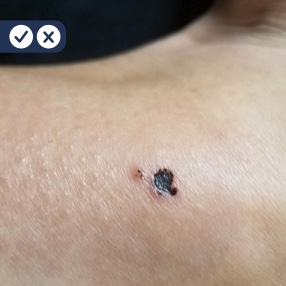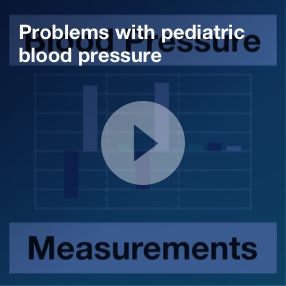
PRIMARY CARE
Clinical Resources
Sign up for Figure 1 and be notified directly of new primary care clinical resources including clinical guidelines, patient cases and related research, quizzes, news, and trends.
The Latest in Primary Care
View primary care clinical resources and other related content — including clinical guidelines, patient cases, videos, and free CME activities — all in one place.
And get more primary clinical resources by signing up for Figure 1. As the largest active network of its kind with over 3 million registered members in 190 countries worldwide, Figure 1 allows healthcare professionals of all kinds — from medical students to physicians, nurse practitioners, physician assistants, etc. — to safely and securely collaborate in real time on patient cases, rare conditions, and strategies for care.
Primary Care Clinical Resources

Primary Care Clinical Guideline Summaries
Opioid Prescribing Recommendations for Acute Pain Clinical Guidelines Summary
The CDC updated their opioid prescribing guidelines as part of a response to the ongoing opioid crisis. This summary focuses on their recommendations for outpatient management of acute pain (lasting less than one month) in adults. When deciding whether to prescribe opioids for acute pain in both opioid-tolerant and opioid-naïve patients, clinicians should first consider possible alternatives.
Read the clinical guidelines summary >
Opioid Use in Non-Palliative Subacute and Chronic Pain Clinical Guidelines Summary
The CDC updated their opioid prescribing guidelines as part of a response to the ongoing opioid crisis. This summary focuses on their recommendations for outpatient management of subacute (lasting one to three months) and chronic (lasting longer than three months) pain in adults. Getting a thorough history of the pain, including prior treatments, comorbidities, and potential contraindications, is key in selecting the right medication for each individual patient.
Read the clinical guidelines summary >
Painful Diabetic Polyneuropathy Clinical Guidelines Summary
Clinicians should assess patients with diabetes for peripheral neuropathic pain, and be counseled that the goal of medications is to reduce, and not necessarily eliminate, pain. Complete resolution of symptoms at this time is rarely achieved, with 30% pain reduction being considered a success in clinical trials.
Read the clinical guidelines summary >

Primary Care Patient Cases
Click on the image to see the full case details and sign in to view community comments.
See more cases like these
Sign up for Figure 1 and gain access to a library of 100,000+ real-world cases.

Primary Care Clinical Quizzes
Click on the image to see the full quiz details and sign in to view community comments.

Trending Topics in Primary Care
The top three most searched primary care topics by healthcare professionals on Figure 1.
1. Gangrene
2. Paronychia
3. Psoriasis

Primary Care Videos

Listen and Learn: DDx Podcast
Young, fit, and female? Higher chance of misdiagnosis
Listen to the full first season of our DDx podcast, exploring a series of some physicians’ most memorable cases. Enjoy six real stories of patients presenting with obscure and uncommon symptoms.

Free CME
View a case about a patient presenting with corneal rings and learn about their potential association with cardiovascular disease while understanding how to apply effective diagnosis and treatment. Start activity >
Discover how fluoroquinolones can increase risk of aortic dissection and which patients should avoid these antibiotics. Start activity >
Recognize the common presenting symptoms of measles, an extremely contagious, vaccine-preventable illness. Start activity >
Free Primary Care CME
Sign up for Figure 1 and gain access to 100,000+ opportunities for CME credits—valued at more than $2,000—for free.


Related Research
Virtual Primary Care in High-income Countries During the COVID-19 Pandemic: Policy Responses and Lessons for the Future | PubMed
“Telemedicine, once defined merely as the treatment of certain conditions remotely, has now often been supplanted in use by broader terms such as ‘virtual care’, in recognition of its increasing capability to deliver a diverse range of healthcare services from afar. With the unexpected onset of COVID-19, virtual care (e.g., telephone, video, online) has become essential to facilitating the continuation of primary care globally. Over several short weeks, existing healthcare policies have adapted quickly and empowered clinicians to use digital means to fulfill a wide range of clinical responsibilities, which until then have required face-to-face consultations.”
Primary Care-based Interventions to Address the Financial Needs of Patients Experiencing Poverty: A Scoping Review of the Literature | PubMed
“It is broadly accepted that poverty is associated with poor health, and the health impact of poverty has been explored in numerous high-income country settings … Using a scoping review methodology, we searched five databases, the grey literature and the reference lists of relevant studies to identify studies on interventions to address the economic needs-related social determinants of health that occur in primary health care delivery settings, in high-income countries.”
Digital Health Needs for Implementing High-quality Primary Care: Recommendation from the National Academies of Sciences, Engineering, and Medicine | PubMed
“A National Academies of Sciences, Engineering, and Medicine committee developed a plan to implement high-quality primary care … The first action is developing the next phase of digital health certification standards that support relationship-based, continuous, person-centered care; simplify user experience; ensure equitable access; and hold vendors accountable. Second, the committee recommended adopting a comprehensive aggregate patient data system usable by any certified digital health tool.”

Related Medical Calculators
Atheroscleotic Cardiovascular Disease (ASCVD) Risk Algorithm
PECARN Pediatric Head Injury/Trauma Algorithm


















